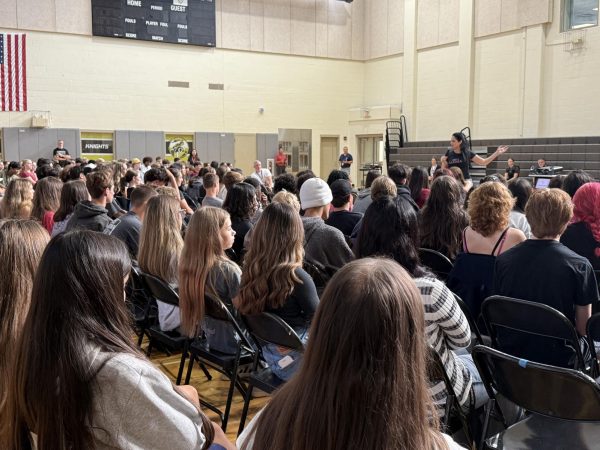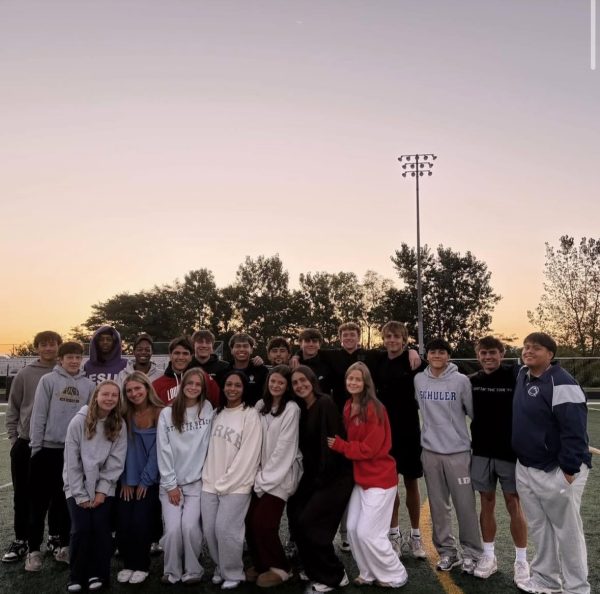Measures in place to keep students, staff safe at school
You wake up at 7:00 a.m. to get ready for school. You open up your phone and go to CrisisGo and answer a few questions to confirm you are not symptomatic. You head to school and they check that you are good to go by showing them your CrisisGo and taking your temperature.
Going to a hybrid learning style has allowed GNHS to adapt their way of tracking symptoms by moving to an app called CrisisGo.
Grayslake North High School started the school year by having students fill out a Google form, which was emailed to them at the start of each day for attendance. Once GNHS started hybrid, the administration started using the app, CrisisGo. CrisisGo allows the students to be accountable for themselves and helps the administration be able to easily track those who may have possible COVID exposure.
“The CrisisGo app provides summative data for us. It lets us know everybody that has reported and whether they are at home, whether they are in hybrid, and what symptoms they have. It really helps us identify those that were in close contact,” said Principal Dr. James Roscoe.
Even though many measures are being put in place to help keep staff and students alike safe, this process is also very reliable on the honesty of students and staff. By using CrisisGo, students are held accountable for themselves. The system is completely reliable in trusting the students to do what is right and tell the truth. Although students may not want to have to quarantine, it is expected that they are honest in order to keep those around them safe.
“I think the app itself is good to keep everyone safe, but it’s not based on the app, it’s about the people taking the survey,” said junior Peter Weitgenant.
Since there is a chance that students at GNHS could be exposed to COVID-19, the district has made the numbers of students that have tested positive and the number of students quarantining for any reason available to the public.
“Based on that information, if the numbers are high and someone looks at them, that can help us stay farther apart from each other and be more aware,” Weitgenant said.
As scary as it is, there is always a chance that students could start showing symptoms on campus. The district has a certain email that teachers send if any student shows even one new symptom. That student is then put into an isolation room in order to be kept away from other students and take the risk out of possibly affecting those around them.
“We have an email that the teachers would send and it goes to several different people, me included, and then that student would be put out in the hallway and someone would go up and get them. We do have an isolation room and from there I go and I check the student out and then contact the family and let them know. Unfortunately, any one symptom, and we have to send them home,” said the nurse Annie Swiatek
When someone tests positive for COVID-19, the school has to figure out who, if anyone, has been in close contact with them. This process includes figuring out if anything happened in the classroom in which a student or teacher didn’t have a mask on properly, or in close contact, and then informing those people and having them quarantine or show a negative COVID test.
“We find out when the last time they were at school and who they were hanging out with. If anything in the classroom were to happen, it’s pretty much guaranteed that no one is in contact during classes because everyone pretty much stays six feet apart with masks on, but if by chance something happened where a teacher was with a student for more than 15 minutes, maybe didn’t have their mask on properly, then we contact that student or the teacher to let them know they might have been in contact. At that point they have to quarantine for two weeks,” Swiatek said.
Even though there are many precautions set in place to keep everyone safe, people have to make sure they are doing everything they can to keep themselves, and others safe.
“We can keep this trend by adhering to the social distance of six feet, wear our masks, and wash our hands. These strategies are not new strategies, but they are successful in keeping everyone safe,” Roscoe said.





